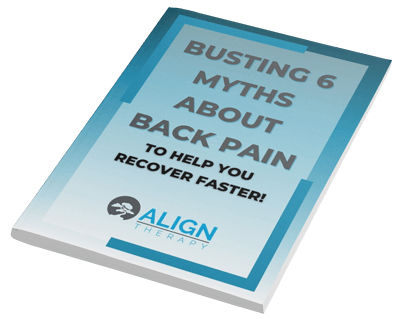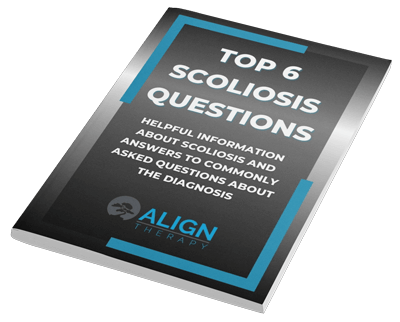Over the last 15 years that I have been a Physical Therapist, I have seen many treatment techniques come and go. Manual therapy techniques specifically have been changing and improving.
Recently, one of my favorite manual therapy techniques has become more mainstream: Dry Needling!
First of all, a quick overview of what Dry Needling is. Then, I will go over what conditions I like to use Dry Needling to treat.
What is Dry Needling?
A full explanation of what Dry Needling is is beyond the scope of this blog post, but here is a quick overview.
In the beginning, Dry Needling was using hypodermic needles without injecting medication…hence the term “dry”. Currently, we use acupuncture needles to target specific areas of the body. These are usually trigger points, or knots, in the muscle.
Inserting an acupuncture needle into the involved tissue helps to jump start the healing process, relaxes the muscle, and has a pain relieving effect. Some of these effects are similar to acupuncture, but this is NOT acupuncture.
Acupuncture’s purpose is to increase the flow of Chi, or energy, in the body. Well, that is a very simplistic view of acupuncture, but know that Dry Needling and acupuncture are very different. We may use the same needles, and some of the same points, but the purpose is different.
What can Dry Needling treat?
So, that brings us to what we use Dry Needling for. The list is pretty long and includes many different diagnoses. I will simplify the list to what I use it for the most.
- Neck Tension – The tightness you feel on the top of the shoulders and into the neck responds amazingly well to dry needling. The muscles relax and this lasts longer than with massage or other manual therapy techniques. When combined with exercise and stretching specific to what caused the problem, it works magic!
- Headaches – Similar to neck tension, reducing the tightness in the muscles along the upper back and neck, and even at the base of the skull can significantly improve headache symptoms. Posture strengthening and stretching can make this very effective long term.
- Back Pain – This is one of my go to treatments for Chronic Back Pain. It helps to reset the nervous system and reduce the pain signals going to the brain. This, combined with less tension as described above, can help get these patients back to activity. Activity and strengthening are key components of this treatment as well.
- TMJ – Or, more accurately…TMD. I don’t treat TMJ without the use of needles anymore. They are just too effective to leave out. Usually, we see significant reductions in pain after the first treatment. Postural training is definitely helpful with this, but reducing the pain makes exercise more possible.
- Rotator Cuff Injuries – There are many types of rotator cuff injuries, and we use Dry Needling on most of them. Using the needles in the cuff muscles helps to recruit more muscle fibers, and needles placed in muscles surrounding the shoulder blade helps to allow the shoulder to move more freely.
- Sciatica – Needles are amazing with sciatic pain going down the leg. Using the needles to desensitize the nerve is very helpful. Reducing the tension of the muscles surrounding the nerve can help as well. Combining this with stretching and exercise is the secret sauce!
- Knee Tendonitis – Many times, tendonitis is due to weakened collagen tissue that is being overloaded. Using needles in the tendon tissue can help to activate the body’s healing response to improve blood flow and speed healing. Combining this with eccentric exercise is the key!
- Plantar Fasciitis – Now, the sound of sticking needles into the bottom of the foot doesn’t sound great, right? Well, it isn’t…but it works! Similar to tendonitis above, it helps to activate healing in the plantar fascia, and has a pain relieving effect to help people get back to activity. Combining this with taping can be really helpful.
There are many other conditions that can benefit from Dry Needling. I rarely use Dry Needling on its own though. Almost always…stretching, strengthening, postural training, mobilization, etc… are used to make sure the pain doesn’t come back.
Here is how a common Dry Needling appointment goes (Lets say, for neck pain):
First, we take the time to evaluate what is going on. This includes asking questions about your work and other activities. Strength and flexibility are tested and measured. Posture is also assessed along with ergonomics. Then, the muscles and joints are pushed on to assess their mobility and tension.
After the assessment, a treatment plan is discussed. This includes a plan on how to address the problems found in the assessment. Strengthening and stretching exercises are instructed and explained and a home exercise program is discussed.
Then, after we have started to address the underlying problems, we turn to manual therapy.
For Dry Needling, we have you lie down or sit in a comfortable position. Then, acupuncture needles are placed within the muscles that are the problem. Usually, all that is felt is the initial poke through the skin, but this is minimal. Sometimes there is an achy feeling as the needle gets into the muscle.
The needles are usually left in for 5-10 minutes while electrical stimulation is used on the needles. This helps to stimulate the nerves and increase blood flow further. Then the needles are removed. Most of the time, there is no bleeding with Dry Needling.
After removing the needles, I have found that if we do some manual therapy on the muscles, like massage or ASTYM, there is not much soreness. This also helps to relax the muscle further.
Most of the time, 3-5 treatment of Dry Needling is sufficient to reduce the pain and tightness and allow a home exercise program to continue helping the problem. Sometimes, though, I have seen patients for long term dry needling where they come in once a month or so for a treatment to keep pain down and reduce tension. This is especially helpful in chronic pain.
Learn more about Dry Needling!
If you are thinking Dry Needling may be right for you, please get in contact with me. You can text or call (801)980-0860 for more information.
If you are still a little unsure if this is right for you, I invite you to come in for a Free Consultation. This will give us a chance to get more information to determine if Dry Needling is right for you. Click HERE to sign up for one of our Free Consultations.
Dry Needling can be amazingly helpful for some conditions, but it is not a cure all. If you have questions, I would love to discuss this more with you.



